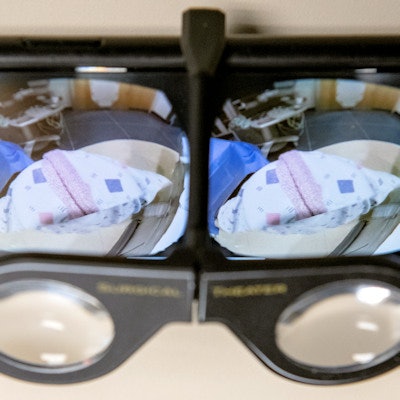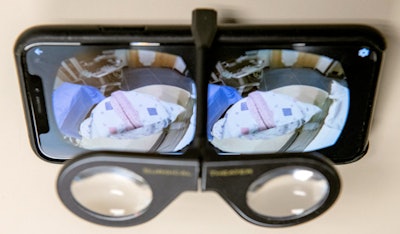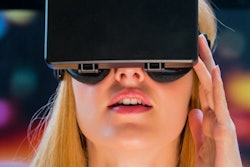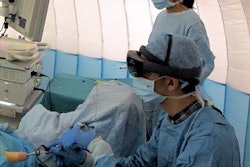
Virtual reality (VR) and augmented reality (AR) are emerging as key tools for advancing education, communication, and clinical care in radiology. Researchers offer details on several practical applications of the technologies as they are being used throughout various hospitals in an article published online April 16 in Radiology.
"VR and AR technologies are a novel means to communicate and have potential for supplementing radiology training; communicating with colleagues, referring clinicians, and patients; and aiding in interventional radiology procedures," wrote Dr. Raul Uppot from Massachusetts General Hospital; Dr. Jesse Courtier from the University of California, San Francisco; Dr. Eliot Siegel from the University of Maryland Medical Center; and colleagues.
In their review, Uppot and colleagues discussed the potential benefits of VR and AR applications, all of which the radiologists are currently exploring at one or more of their institutions:
- Supplementing radiology training and education: Unlike textbooks and online learning modules, virtual reality immerses learners in a virtual world that increases their presence within the learning activity. The ability to see 3D models and medical images in a physical environment boosts active participation and can facilitate experiential learning, the authors noted.
Perhaps better still, augmented reality allows users to interact with 3D models superimposed on a real-world background. Clinicians can produce these models by using open-source or commercially available software to convert DICOM images into 3D object files and then use these files to create holograms with AR software such as Apple's ARKit.
The research group's different institutions have been using AR technology to supplement radiology education for medical students and residents through interactive lectures for the past two years. They have developed AR programs to train interventional radiology residents on how to perform a variety of procedures -- from simple paracentesis to vertebral augmentation.
What's more, VR and AR have allowed clinicians to familiarize themselves with expensive equipment before it goes into clinical use, as well as practice interventional radiology procedures in realistic simulations.
- Bolstering physician communication: The enhanced depth perception, increased field-of-view (100° for a VR display, compared with 30° for a 2D display), and the option of using gestures to manipulate images offer advantages to radiologists reviewing 3D images.
These benefits are particularly relevant for a surgical team, often including a radiologist and surgeon, that needs to plan a complex surgery. Using AR, multiple clinicians can view the same patient-specific 3D anatomical model with high spatial representation and discuss ideal treatment routes, without being in the same physical location.
- Improving patient education: Examining 3D models in VR and AR has also proved useful in helping patients understand their own anatomic and pathologic features, as well as treatment options.
For example, some hospitals have been offering patients a stereoscopic viewer that they can attach to their smartphone to become oriented with an interventional radiology procedure and the surgical suite -- minimizing their anxiety before undergoing the operation.
- Facilitating interventional radiology procedures: More recently, the researchers have used AR technology to overlap diagnostic images of lesions -- based on a fusion of MRI, ultrasound, and CT data -- directly onto the patient during a procedure. Several preliminary studies have demonstrated the potential of these AR projections to improve the accuracy of tasks such as pedicle screw placement and needle insertion.
 Stereoscopic viewer attached to a smartphone for visualizing augmented reality 3D models. Image courtesy of Dr. Raul Uppot.
Stereoscopic viewer attached to a smartphone for visualizing augmented reality 3D models. Image courtesy of Dr. Raul Uppot.The widespread use of virtual reality and augmented reality in radiology is restricted by the relatively high costs of these technologies and the limited availability of content, although costs have been decreasing and the library of digital content continues to grow, the authors noted.
"Further technical innovations enabling further miniaturization of hardware and greater reliability of registration of images will allow these technologies to redefine procedural planning and patient engagement," they wrote.



















